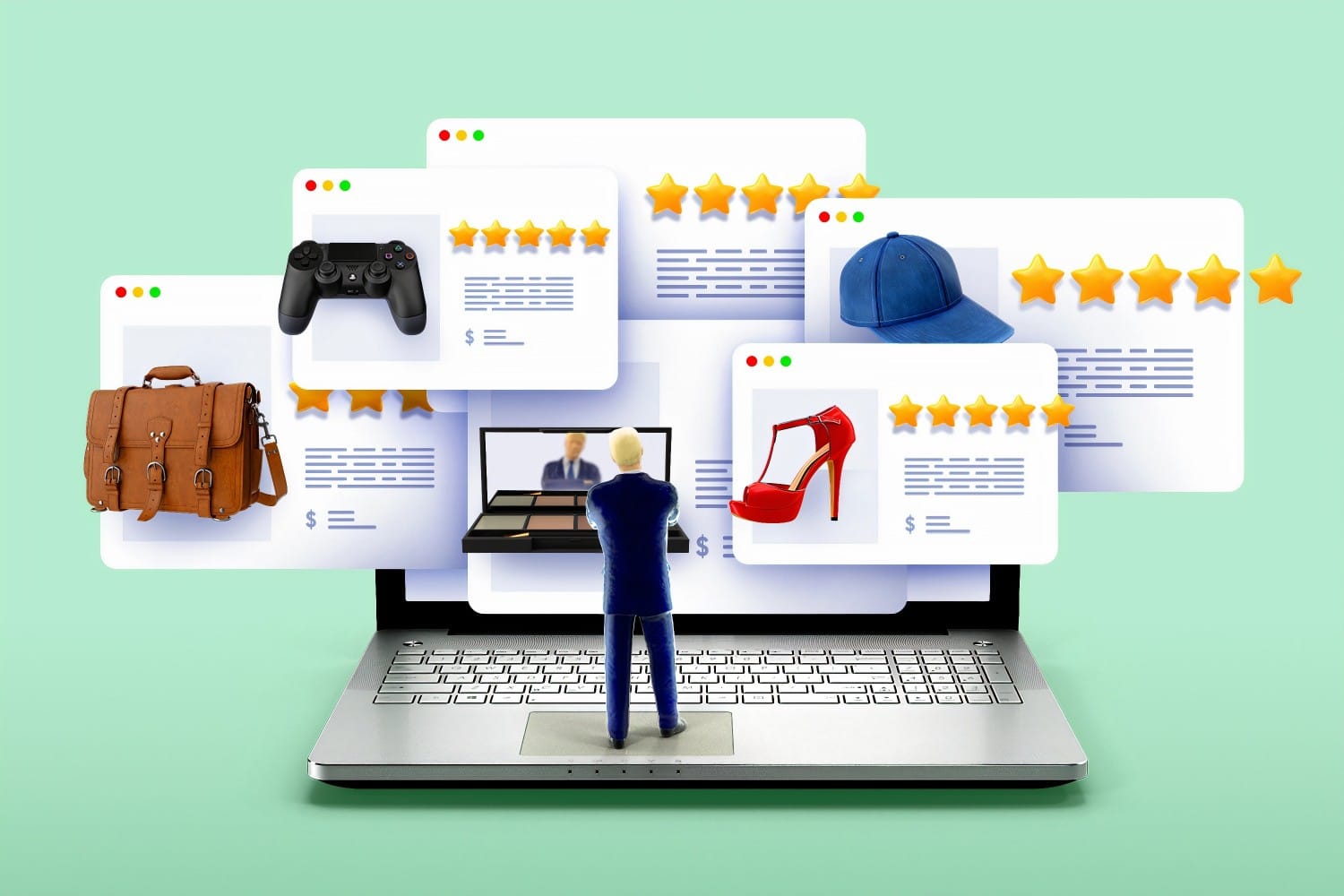As the pandemic pushes on, two things have become clear. First: From Asia to Europe, eCommerce is booming, and shoppers of all ages are digging their heels into their new digital shopping habits. And second: Brands that haven’t prioritized their eCommerce experience are at risk of going under.
Regardless of your stage of eCommerce maturity, competition online is only intensifying as the world faces an extended period of social distancing and safety concerns. The result is that savvy brands are now engaged in an eCommerce arms race, scrambling to out-do one another when it comes to online experience. This post will dive into the key eCommerce technologies that are helping brands and retailers stand out, stay ahead, and, ultimately, win over shoppers in the longterm.
The Digital Adoption Boom & the eCommerce Arms Race
New research from Adobe Analytics revealed that eCommerce spending from April to May this year was higher than the 2019 holiday season. Cooped up at home, consumers spent a total of $153 billion online, which is $52 billion more than what retailers typically see during the spring months.
Moreover, Wunderman Thompson Commerce found that only 16% of consumers plan to return to their old shopping habits post-COVID 19. This permanent shift to digital shopping is one of the lasting impacts of the pandemic on retail.
Even with the overall uncertainty, businesses need to move quickly to capture opportunity, or risk getting left behind. If investment in eCommerce tech, from contactless payments to virtual reality, was on the roadmap before, now it’s a top priority — and retailers are starting to internalize that.
As Khalid Elgibali, Division President at Mastercard, shared, “There’s no better motivation than survival. Many of the traditional revenue streams that were based on customers physically visiting certain stores are just no longer there.”
A 3-Step Plan for Success in the Next Normal
The eCommerce arms race is about more than just improving your online experience. We’re facing a frontier wherein brands will have to navigate a space that is increasingly digital-first, and even digital-only, regardless of their prior business model. When setting out to re-imagine your eCommerce strategy, there are a few key guidelines that will put you on the right path:
1. Assess and refocus efforts to align with changing customer needs
With no playbook to go by, this is the time to monitor and listen closely to your shoppers. Map your customer journeys, understand what shoppers expect from you, and benchmark your digital touchpoints against the competition.
This way, you’ll not only address the demands of your customers but also deliver competitive online experiences that engage shoppers. McKinsey & Co. identified trends characterizing customer behavior in the wake of COVID-19 — we’ve rounded up three of the most important ones below (but of course, there’s no substitute for getting feedback directly from your specific audience):
- Openness to new shopping behaviors: As consumers embrace shopping online, they’re simultaneously experimenting with new tech and services, whether out of necessity or curiosity. So, self-service technologies such as digital kiosks and contactless payments, as well as fulfillment solutions like curbside pickup, drive-through, and BOPIS (buy-online pick-up in-store) will likely see widespread and ongoing adoption.
- The importance of empathy: Consumer confidence is down. People are concerned about their health, and they’re worried about the impact of the pandemic on the economy. Brands need to acknowledge these concerns and make the extra effort to ensure customers feel understood and cared for.
- Willingness to try new brands: Because of supply chain disruptions, many shoppers have had to explore different brands, retailers, and marketplaces. As a result, now more than ever, loyalty is at risk. The inverse of that is that brands have an unprecedented opportunity to win over new customers — the brands that are able to provide value and outstanding customer experiences will be able to build new communities of loyal shoppers.

2. Draw inspiration from early adopter retailers
As long as there are digital laggards, the other side of the spectrum includes the early digital adopters who are pushing the boundaries of eCommerce. Brands at the forefront of retail’s digital transformation are experimenting — with a sense of urgency — to win over shoppers with seamless online experiences. These are some of the technologies they’re implementing:
- Virtual try-on. Bring the in-store experience online — not only to make shopping fun but also to make your customers feel confident in their potential purchases. This is especially true for fashion, cosmetics, and skincare where customers rely on trying products. As shoppers avoid real-world interactions, MAC and Sephora now allow consumers to virtually try on products using their web or phone camera. ASOS also enables shoppers to see how items fit on models using augmented reality.
- Live-stream shopping: This one is already huge in Asia. It started with the Chinese eCommerce platform Taobao. Now, other online marketplaces in the region such as Alibaba, Shopee, and Lazada offer the same feature. Live streaming brings the social aspect of in-store shopping online and allows real-time engagement between you and your shoppers. Moda Operandi is one of the latest luxury brands to debut a new video shopping feature.
- 3D digital sampling: You can also use digital capabilities to streamline operations. For example, Levi’s uses 3D technology for sampling and design. This eliminates the need for offering physical samples to merchants, saving both resources and time to market for new designs.
- Visual discovery: Simplify product search and discovery on your website or app. Salesforce Research and Harris Poll found that 78% of consumers consider easy product search one of the most important factors for online shopping. Without a sales associate to help them find what they’re looking for, shoppers need to be able to search conveniently and find accurate and personalized results. With visual search and intelligent recommendations, they don’t need to worry about finding the perfect keywords, and can instead discover products quickly and intuitively.
- Immersive online experiences: Leading retailers are getting creative as they try to differentiate and reinvent their online experience from beginning to end. For example, IKEA has a web-based platform called EverydayExperiments.com that showcases digital experiments on home design. Diesel’s HYPEROOM, a 360-degree virtual selling platform and exhibition space, features videos, product descriptions, 2D closeups, and even order-taking.
- Co-browsing or personal shopper services: Use on-site chat and one-on-one video calls with personal shoppers to offer the level of attention, advice, and service shoppers expect in your physical stores online. This is also an opportunity to add a human touch and offer additional value, like product education. For example, Akram Skincare conducts virtual assessments and how-to lessons for shoppers.
These are a few examples of the technology transforming eCommerce today, but it’s just the beginning: innovation is on the rise as shoppers express unprecedented eagerness to adopt new digital habits. As Deborah Weinswig, chief executive at Coresight Research, said, “Demand for all kinds of technology in retail has exploded. We are seeing years of innovation in a matter of months.”

3. Build an implementation strategy
Revamping your online strategy or even just adding new technology can feel like a big leap for any organization. To ensure that your investment doesn’t go to waste, here are three must-dos when you build and prioritize your implementation plan.
- Focus on product availability and visibility: Remember that in the post-COVID-era, many of your shoppers will be new. They are unfamiliar with your site layout, the breadth of your offering, and the products themselves. A key way to drive both purchases and return visits is by giving your customers an easy, intuitive way to find what they’re looking for. You’ll also want to make sure they have real-time visibility into inventory, so searches don’t surface out-of-stock items without making recommendations for similar items to avoid disappointment.
- Put data at the center: Since consumers drive trends, it’s important to adopt a digital solution that can help you stay ahead of the curve. Being data-driven allows you to track search queries, predict merchandise demand, as well as surface and even create products that shoppers are looking for. Additionally, by understanding the nuances of shoppers’ past and real-time browsing history, you can offer the most relevant products across their journey.
- Get everybody on board: Make sure that you have stakeholder buy-in for the changes you’re making to your online experience. To see the results of any new technology you implement, you need to deploy it optimally and find out how to use it in the most effective way for your business. For that to happen, you need to support of your entire eCommerce and digital product teams.
Moving Forward in the eCommerce Arms Race
COVID-19 has transformed the way people shop. Consequently, brands must change as well. Going digital is no longer just an option—it’s only the option.
Determining which digital capabilities to augment and scale while navigating a competitive eCommerce arms race can be daunting. However, this challenge brings with it opportunities to uncover new markets, create novel ways to engage shoppers, grow revenue, and ensure your brand is a market leader in the next normal.